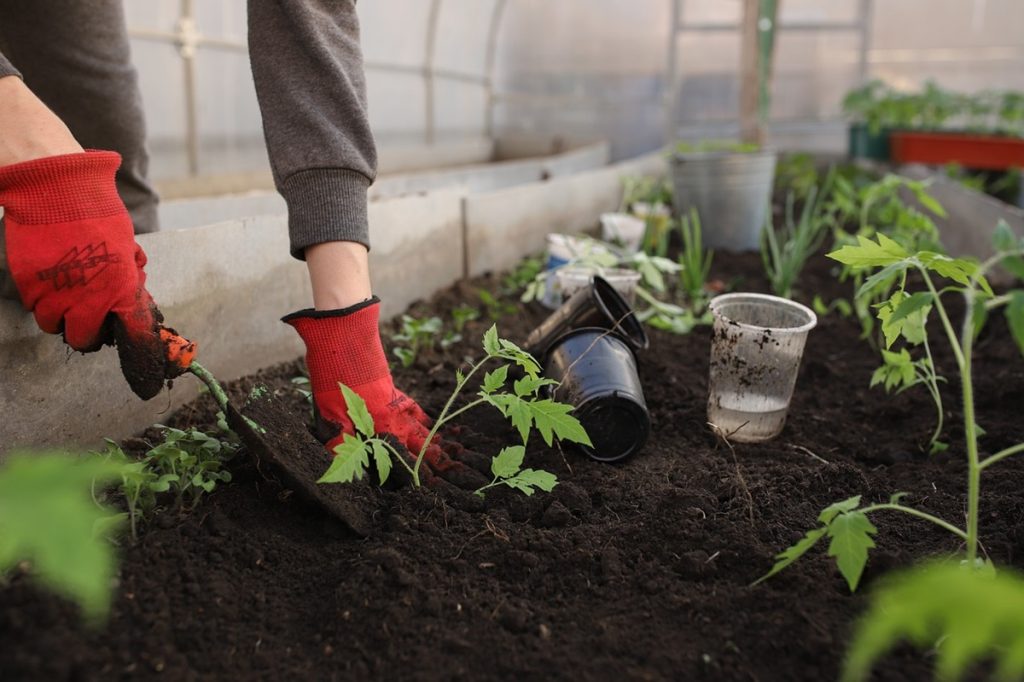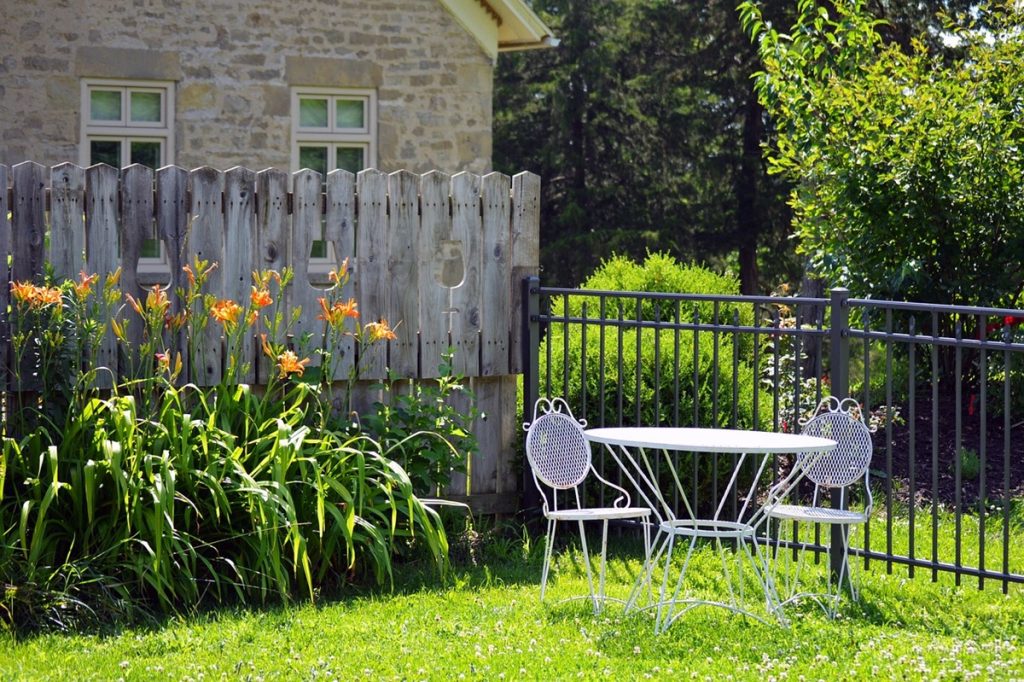Take Care Of Your Garden With These Useful Guidelines
Are you looking for ways to maintain your garden and keep it looking amazing? Your garden is more than just a plot of land with plants and flowers. It’s a space where you can relax, connect with nature, and even grow your own food. Whether you’re an experienced gardener or just starting out, taking care of your garden requires time, effort, and knowledge. But don’t worry – we’ve got you covered!
In this blog post, we’ll share some useful guidelines to help you maintain a beautiful and thriving garden. From basic tasks like watering and weeding to more advanced techniques like pruning and fertilizing, these tips will ensure that your garden stays healthy all year round. Let’s get started!

Hire Professional Services
Maintaining a garden can be a daunting task, especially if you have a large or complex landscape. In such cases, hiring professional gardening services can be extremely beneficial. These services have trained and experienced professionals who are well-equipped to handle all aspects of garden maintenance. For instance, a Perth Gardener can help you with everything from designing and planning your garden layout to regular maintenance tasks like pruning, weeding, and fertilizing. They can also advise you on suitable plant choices for your specific climate and provide tips for sustainable gardening practices. While it may require a financial investment, hiring professional services can save you time, effort, and even money in the long run by avoiding costly mistakes.
Plan Your Garden Layout
Before diving into any gardening tasks, it’s important to have a well-planned garden layout. This involves considering factors such as sunlight exposure, soil quality, and plant placement. By strategically placing plants in your garden, you can create a visually appealing and functional space. For instance, taller plants can provide shade for smaller ones, while companion planting can help control pests and promote healthy growth.
Additionally, planning your garden layout also includes considering the maintenance needs of your plants. For example, placing high-maintenance plants in hard-to-reach areas may make it difficult for you to tend to them regularly. By taking the time to plan your garden layout, you can save yourself from potential headaches and create a harmonious environment for your plants to thrive.
Choose the Right Plants for Your Climate
One of the key factors in maintaining a successful garden is choosing plants that are suitable for your climate. This means considering the average temperature, rainfall, and humidity levels in your region. By selecting plants that are well-adapted to these conditions, you can reduce the risk of plant stress or failure.
Researching which plants thrive in your specific climate can also help you make more informed decisions when it comes to watering, fertilizing, and protecting your plants from extreme weather conditions. You can consult with local garden centers or search online for plant recommendations that will thrive in your climate.
Water Regularly and Wisely
Water is essential for the health and growth of your plants. However, it’s important to water them regularly and wisely to avoid over or under-watering. When watering, aim to provide enough water for the soil to be moist but not soggy. This will allow for proper root growth and prevent diseases caused by excess moisture.
It’s also important to consider the specific water needs of each plant in your garden. Some may require more frequent watering, while others can thrive with less. You can also invest in irrigation systems or use mulch to retain moisture and reduce the frequency of watering.
Mulch to Retain Moisture and Suppress Weeds
Mulching is a simple yet effective way to take care of your garden. By laying down a layer of organic material like wood chips, straw, or compost on top of the soil, you can help retain moisture and suppress weed growth. This is especially important in hot and dry climates where water conservation is crucial.
In addition to its practical benefits, mulch also adds nutrients to the soil as it decomposes, promoting healthy plant growth. Just be sure to keep the mulch at a depth of 2-3 inches and avoid piling it up against plant stems, as this can create a breeding ground for pests and diseases.
Fertilize at Appropriate Times
Fertilizing your plants is another important aspect of garden care. However, it’s crucial to do so at the right time and with the right type of fertilizer. Different plants have different nutrient requirements, so be sure to research which type of fertilizer is best for each plant in your garden.
Generally, it’s recommended to fertilize in the spring and fall when plants are actively growing. You can also use natural fertilizers such as compost or manure instead of chemical ones for a more environmentally friendly option. Just be careful not to over-fertilize, as this can lead to nutrient burn and harm your plants.

Control Pests and Diseases Naturally
Pests and diseases can quickly ruin a garden if left unchecked. However, using chemical pesticides can also harm beneficial insects and disrupt the natural balance of your garden. Instead, opt for natural pest control methods such as introducing companion plants, using physical barriers like row covers, or making your own organic pest sprays.
Similarly, preventing and managing diseases can also be done naturally by practicing good garden hygiene, choosing disease-resistant plants, and using preventive measures like crop rotation. For instance, planting different crops in the same location each season can help break the disease cycle and promote healthy soil. By avoiding harmful chemicals, you can maintain a healthy and sustainable garden ecosystem.
Prune Regularly to Promote Healthy Growth
Pruning is an essential task for maintaining the health and shape of your plants. By removing dead or damaged branches, you can prevent diseases from spreading and promote new growth. Pruning also allows for better air circulation and sunlight penetration, which is crucial for plant health.
Different plants have different pruning requirements, so be sure to research how and when to prune specific plants in your garden. It’s generally recommended to prune in the dormant season for most plants, but some may require pruning after flowering. Regularly pruning your plants will not only keep them looking tidy but also encourage healthy and vigorous growth.
Remove Debris and Dead Plants
Dead plants and debris can not only make your garden look unkempt, but they can also harbor pests and diseases. It’s important to regularly remove any dead or dying plants and clear out debris from your garden. This will not only improve the appearance of your garden but also prevent potential issues.
You can compost the plant debris to create nutrient-rich soil for your garden or dispose of it properly. Additionally, removing weeds as they appear can prevent them from spreading and taking over your garden. By keeping your garden clean and tidy, you can maintain a healthy environment for your plants to thrive.
Monitor for Signs of Stress or Nutrient Deficiencies
It’s important to keep an eye on your plants and monitor them for any signs of stress or nutrient deficiencies. This could include wilting, discoloration, stunted growth, or pest infestations. Catching these issues early on can help prevent them from becoming bigger problems.
If you notice any signs of stress or nutrient deficiencies, research the possible causes and take appropriate action. This could involve adjusting watering or fertilizing schedules, using natural remedies for pests, or providing specific nutrients to your plants. By being proactive and attentive, you can ensure that your garden stays healthy and thriving.
Rotate Crops to Maintain Soil Health
Crop rotation is a practice used by farmers and gardeners alike to improve soil health and prevent plant diseases. By rotating the types of crops grown in a particular area, you can avoid depleting specific nutrients from the soil and reduce the risk of disease buildup.
For home gardens, this can be as simple as planting different crops in different areas each growing season. You can also incorporate cover crops, which can add nutrients to the soil and protect it from erosion. By practicing crop rotation, you can maintain healthy soil for your plants to grow and thrive in.
Practice Sustainable Gardening Techniques

Sustainable gardening is a philosophy that promotes environmentally friendly practices to maintain a healthy and productive garden. This includes using organic fertilizers and pest control methods, conserving water, promoting biodiversity, and reducing waste.
One way to practice sustainable gardening is by creating a compost pile using kitchen scraps and yard waste. This not only reduces the amount of waste sent to landfills but also produces nutrient-rich organic matter for your garden. You can also choose native plants that are well-adapted to your climate and require less maintenance. By incorporating sustainable techniques into your gardening routine, you can create a beautiful and eco-friendly space.
Taking care of your garden requires a combination of knowledge, effort, and time. By following these 12 useful guidelines – from hiring professional services to practicing sustainable gardening techniques – you can create a beautiful and thriving garden all year round. Remember to regularly monitor your plants for signs of stress or deficiencies, adjust your watering and fertilizing schedules accordingly, and stay attentive to the needs of your garden. With these tips, you can maintain a healthy and sustainable garden that will bring joy and beauty to your outdoor space.
